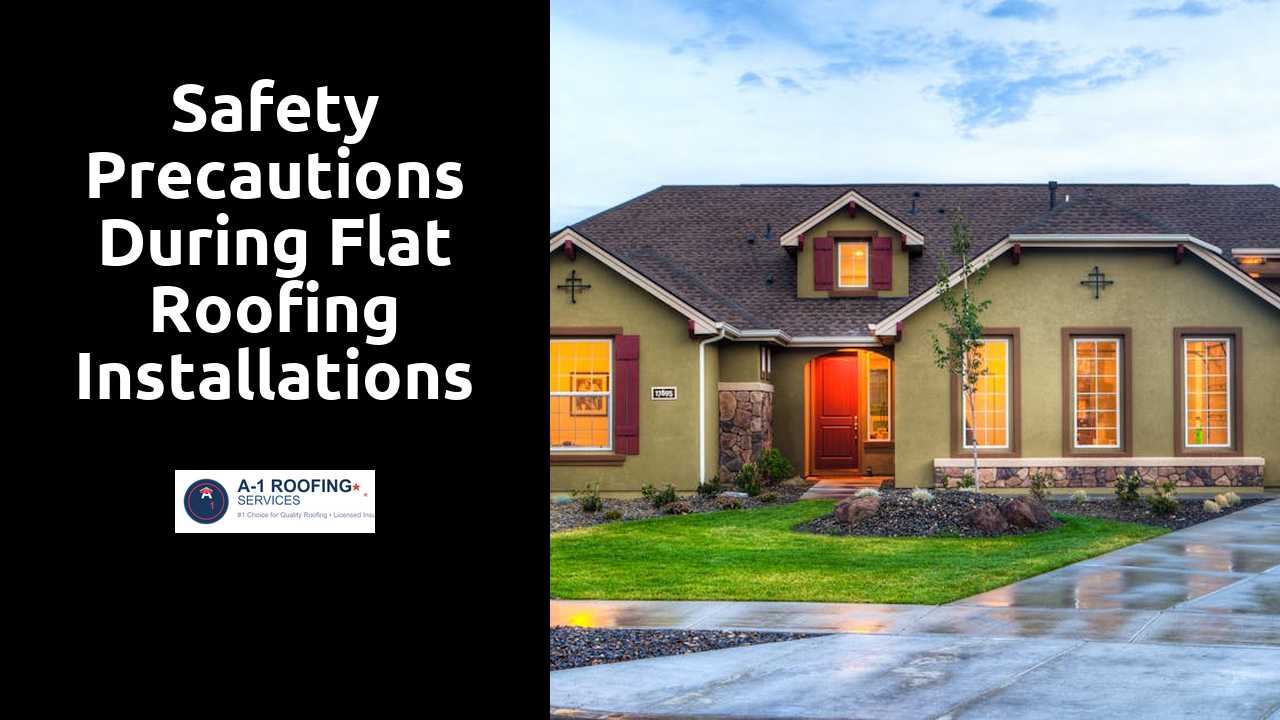
Safety Precautions during Flat Roofing Installations
Table Of Contents
Fall Protection Measures
Maintaining safety during flat roofing installations is crucial, as falls are a leading cause of injury in the construction industry. Proper fall protection measures must be implemented to minimize risks for workers. This includes using personal protective equipment, such as safety harnesses, which should always be securely attached to a reliable anchor point. Regular training sessions on the correct use of these safety devices can enhance compliance and ensure that workers understand their importance.
In addition to personal protective equipment, guardrails play a vital role in fall prevention. Installing guardrails along the edges of the roof can provide an additional layer of safety, creating a physical barrier that helps prevent accidental falls. Workers should be reminded to keep their work areas clean and organized, reducing the potential for tripping hazards while performing their tasks. Regular inspections of fall protection equipment and systems can also help identify any wear or damage, ensuring that safety measures remain effective throughout the installation process.
Check out this site for more information.
Implementing Safety Harnesses and Guardrails
Utilizing safety harnesses plays a critical role in protecting workers on flat roofing projects. These devices must be correctly fitted and securely attached to an anchorage point. Regular inspections ensure the harnesses remain in optimal condition. Workers should receive thorough training on how to don and doff the harness properly. This knowledge not only enhances safety but also instills confidence when working at height.
Incorporating guardrails adds an additional layer of protection for those on the roof. These barriers should be installed around the perimeter and should comply with industry regulations. Proper installation prevents accidental slips or falls. Regular checks confirm that the guardrails remain sturdy and free from any obstructions. Together, harnesses and guardrails create a safer working environment, significantly reducing the risk of accidents.
Handling Materials Safely
Proper handling of materials is critical to ensuring safety during flat roofing installations. Workers should always assess the weight and size of materials before moving them. Using appropriate lifting techniques can help prevent injury. Teamwork often eases the burden of heavy items, allowing workers to share the load and reduce the risk of accidents. If equipment or machinery is required for transportation, it must be operated by trained personnel who understand the machinery's capacity and safety features.
Storage of materials must also follow safety guidelines to avoid hazards on-site. Heavy items should be stacked securely, with heavier materials placed at the bottom to minimize the risk of toppling. Hazardous materials must be clearly labeled and kept in designated areas away from potential ignition sources. Regular inspections of storage areas can help identify and rectify potential safety issues, ensuring a safe working environment for all involved in the roofing project.
Best Practices for Material Storage and Movement
Proper organization of materials is essential to maintain a safe work environment during flat roofing installations. Utilize designated storage areas that protect materials from adverse weather conditions. Stack materials securely to prevent them from toppling over. Ensure that lighter materials are placed on top of heavier ones. Clearly label storage areas to enhance accessibility and awareness.
When moving materials around the site, use appropriate lifting techniques to prevent injuries. Team lifting is advisable for heavier items to distribute weight and reduce strain. Utilize carts or dollies for transporting materials across the roof whenever possible. Always keep walkways clear to eliminate tripping hazards. Regularly inspect tools and equipment to ensure they are in good working order before use.
Fire Hazards Awareness
Fire hazards present a significant risk during flat roofing installations. The combination of flammable materials, open flame tools, and the heat generated by labor can easily ignite a fire if proper precautions are not taken. Understanding the specific types of materials being used is essential. Common roofing components, such as certain adhesives, membranes, and insulation boards, can pose increased fire risks when exposed to excessive heat or sparks.
Awareness of the potential ignition sources is critical for minimizing risks. Workers should be trained to identify and eliminate potential hazards, such as electrical tools that may overheat or the use of open flames for roofing tasks. Keeping firefighting equipment accessible on-site is necessary for immediate response should an incident occur. Routine inspections and risk assessments can help ensure safety remains a priority throughout the installation process.
Preventing Fire Risks during Installation
Proper awareness and preparation are essential to mitigate fire risks during roofing installations. Workers should be familiar with the specific materials used in the project, as some may be more flammable than others. It is important to keep all flammable substances away from heat sources, including tools that generate sparks. Regular inspections of electrical equipment can prevent short circuits that lead to ignition. Additionally, having fire extinguishers readily accessible on-site is crucial and can prevent small accidents from becoming larger fires.
Training personnel on fire safety protocols is equally important. Employees should know how to identify potential hazards and respond appropriately in case of a fire. Establishing a clear evacuation plan contributes to the overall safety of the worksite. Conducting fire drills ensures that everyone knows their roles in an emergency. Communication about fire risks should be a part of daily briefings, reinforcing the significance of vigilance when handling materials and operating equipment.
Related Links
How Weather Impacts Flat Roofing InstallationComparing Installation Techniques for Different Flat Roofing Materials